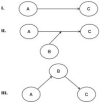Psychological aspects of the treatment of patients with disorders of sex development
- PMID: 23044882
- PMCID: PMC3687360
- DOI: 10.1055/s-0032-1324729
Psychological aspects of the treatment of patients with disorders of sex development
Abstract
Research on the psychological development of persons with Disorders of Sex Development (DSD) has focused on understanding the influence of atypical sex hormone exposure during steroid-sensitive periods of prenatal brain development on the process of psychosexual differentiation (i.e., gender identity, gender role, and sexual orientation). In contrast, analysis of clinical management strategies has focused on gender assignment and the desirability and timing of genital surgery. This review focuses on the psychological issues that confront clinicians managing the care of persons born with DSD and their families. Particular attention is paid to processes and factors that potentially mediate or moderate psychosocial and psychosexual outcomes within and across developmental stages.
Thieme Medical Publishers 333 Seventh Avenue, New York, NY 10001, USA.
Figures

References
-
- Crouter AC, Manke BA, McHale SM. The family context of gender intensification in early adolescence. Child Dev. 1995;66(2):317–329. - PubMed
-
- Pickles A, Hill J. Developmental psychopathology. In: Cicchetti D, Cohen D, editors. Developmental psychopathology Theory and method. 2nd ed. John Wiley & Sons, Inc; Hoboken, New Jersey: 2006. pp. 211–43.
-
- Lee PA, Houk CP, Ahmed SF, Hughes IA. International Consensus Conference on Intersex organized by the Lawson Wilkins Pediatric Endocrine Society and the European Society for Paediatric Endocrinology. Consensus statement on management of intersex disorders. Pediatrics. 2006;118(2):e488–e500. - PubMed
-
- Pasterski V, Prentice P, Hughes IA. Consequences of the Chicago consensus on disorders of sex development (DSD): current practices in Europe. Arch Dis Child. 2010;95(8):618–623. - PubMed

